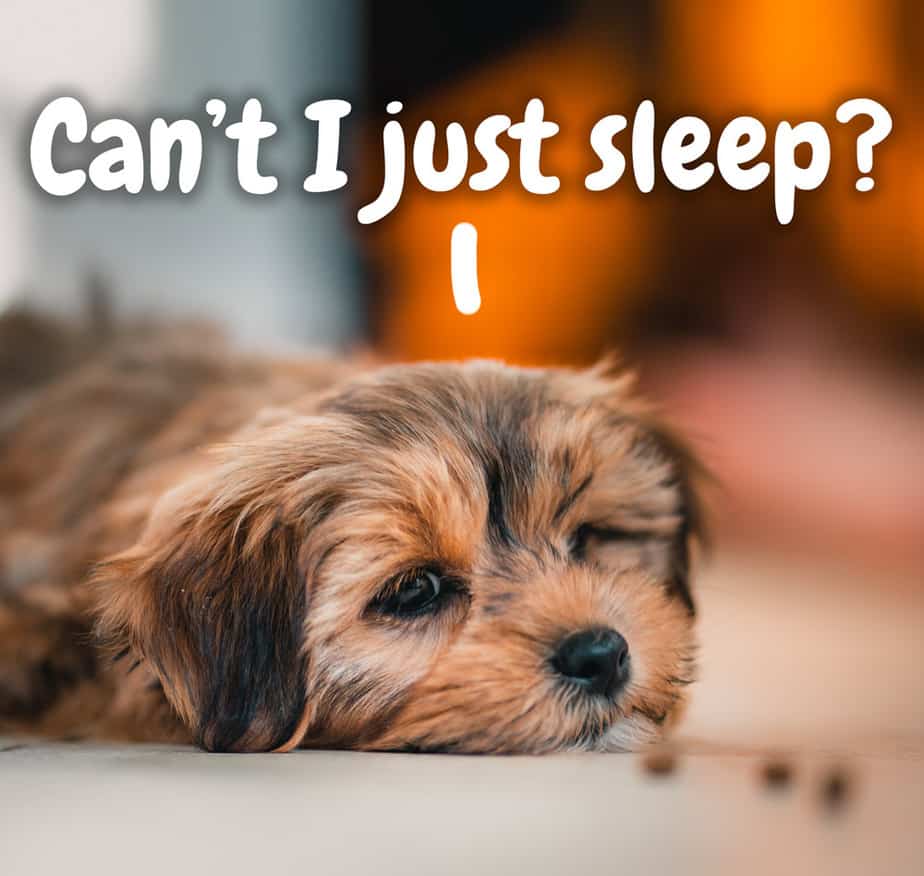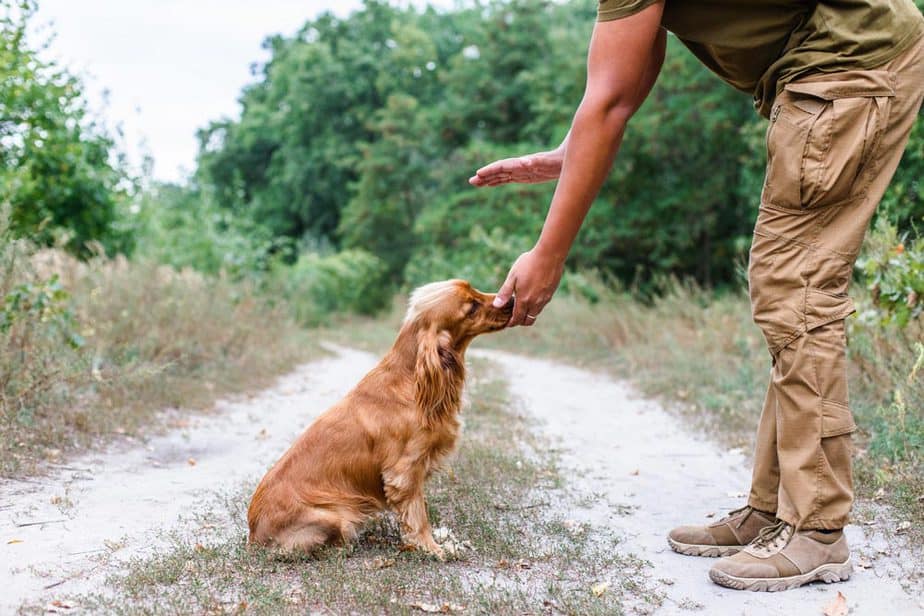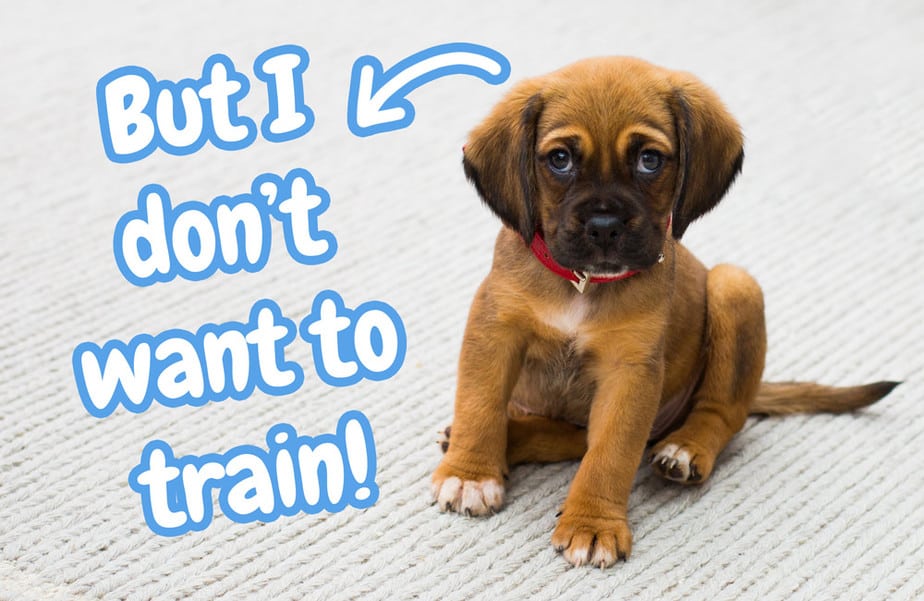While you might anticipate your puppy to be high energy, you might now find yourself with a calm, or even lazy, puppy. Your plans now have to change, and your puppy’s motivation to train is likely different.
In this article, we’ll be covering some different ways you can train your lazy puppy to walk as well as some ideal ways to play with your lazy puppy, so you can get the most out of your training and play sessions together.
Why is my puppy being lazy?
One of the first steps to training or playing with your lazy puppy is to determine why your puppy is being lazy in the first place. Once you know why your puppy is acting lazy, you’ll be able to find the proper motivation to train them as well as what games they like to play.
The first place to start when determining why your puppy is lazy is their breed. Some breeds need less exercise than others, and it’s possible you are trying to do more with your puppy than they are ready to do.
While there are individuals within every breed, it’s still a good place to start when considering how much exercise your puppy needs. If your puppy is from a breeder, you can also ask about your puppy’s parents.
Next, you’ll want to consider your puppy’s age. Very young puppies are essentially infants, and need plenty of sleep. Plus, on average, dogs sleep more than humans!
When your puppy is under 3 months old, it’s very normal for them to sleep at least 20 hours a day. Even as an older puppy, dogs under 1 year tend to still need 16 hours of sleep a day or more.
Considering your puppy needs plenty of sleep – often throughout the day in short naps – you should re-evaluate if your puppy is truly lazy. You might discover that your puppy is plenty normal for their age!
Finally, you should also consider that poor health could be a contributing factor to your puppy’s energy level.
If your puppy seems excessively lazy, it’s important to discuss their behavior with their veterinarian at their next visit. You might find out that what you thought was lazy behavior, was actually lethargy as a symptom of illness.
Even something as “simple” as internal parasites can take a toll on your puppy’s energy level. Purchasing a puppy from a reputable rescue or responsible breeder are two ways you can start off on the right foot with your puppy’s health.
To find out more about causes and treatments of lazy puppies, be sure to read our post: Why is My Puppy Lazy: Causes and Treatments.

How to train a lazy puppy
If you’ve determined that your puppy is truly on the lazier end of the spectrum, you’ll need to take some extra steps to motivate your puppy in training.
While a more energetic puppy may be motivated by a simple piece of dog food, a lazy puppy will want to know what’s really in it for them.
Some options for high-value rewards include: hot dogs, string cheese, dehydrated liver, shredded chicken, and deli meat. You’ll want to make these rewards are the size of a pea or smaller, so your puppy doesn’t fill up on junk food too quickly!
Once you’ve determined which treat your puppy loves the most, you’ll want to save that treat ONLY for training sessions. If you can find several treats and create a trail mix of sorts, even better!
Variety in your treats, while maintaining their high-value status, will help keep your puppy interested and motivated to learn.
One important aspect of training is to make sure you are using your treats frequently as a reward, rather than a bribe. If you show your puppy the treat first, you’re actually bribing your puppy.
If you keep the treats in a treat pouch or your pocket, you can reward your puppy by grabbing the treat AFTER the behavior occurs. By doing this, you’ll help keep your puppy motivated for the chance to earn a treat, instead of comparing the bribe of a treat to whatever else is happening.
Besides having exciting treats to motivate your lazy puppy, you’ll also want to structure your training sessions around their behavior. Watch for when your puppy is more motivated and energetic and use this time for training.
Also, if your puppy has a low food drive, then be sure to read our post: Puppy Doesn’t Like Treats.

Train a Lazy Puppy to Walk
Instead of trying to take one long walk, split your walks up into short excursions. Ideally, you’ll want to quit your walks before your puppy even shows signs of being tired and lazy.
If you keep pushing your puppy to walk when they are too tired, you can turn walks into a negative experience for your puppy. Instead of motivating your puppy to take short walks, you’ll actually be pushing your puppy to the point that they don’t want to walk at all!
You should also time your walks with the time of day that your puppy has the most energy. Usually, this will be right after your puppy has a nap.
By training your puppy to walk when they are most active, taking short walks, and making sure your puppy is motivated with delicious and exciting treats, you’ll be able to build your puppy’s tolerance for longer and longer walks.
How to play with a lazy puppy
When you have a lazy puppy, it can sometimes seem like they don’t want to play with you. However, it’s likely that you just need to change your expectations for play, as well as your method of playing with your puppy, before you find success.
Looking at some of the methods of play recommended by Dr. Amy Cook (and illustrated by Lili Chin) is a great place to start when deciding how to play with your dog.
You’ll notice that a very important aspect of play with your dog is listening to what your puppy wants to do, rather than dictating the method of play.
Some dogs will prefer to be chased and played with in a more assertive manner than other dogs. Calm and lazy puppies often tend to want to be enticed into play, where they can then pounce on you instead.
Besides using just your body movements to play with your dog, you can also use toys or food to entice your lazy puppy to play.
Using toys, you can move them around to try and get your puppy to chase it or pounce on it. Sometimes, you might have to try several different toys to determine which your puppy likes the best.
Plush soft toys, toys with squeakers, crinkle toys, balls, and rubber toys are just a few of the options you can try.
For some puppies, you can even take them with you to the pet store and see which toys they try to play with the most!
Besides enticing your puppy to play chase with a toy, you can also try playing fetch, or even letting your puppy play with the toys themselves at first. Once they’ve discovered that they love a certain toy, you can start to casually play with them.
You can also increase the value of toys by only bringing them out for play sessions instead of leaving them around the house constantly. If the toys are always available, they aren’t very exciting, and your puppy isn’t likely to want to play.
Finally, you can play with your puppy using treats, too! Tossing their kibble for them to chase, or having them chase your hand full of food around for a moment, are just two of the many ways you can make feeding time into play time.
Your puppy doesn’t need to eat from a bowl, so take advantage of that fact and use their food to have fun!
While your lazy puppy might not play as readily as others, it’s an important skill to teach young puppies. If your puppy learns how to play, you’ll be able to use play to interact with and bond with your puppy for the rest of their life.
This is especially true if you can get your puppy to play with just you, using your hands and body movements, since you will forever have that with you!




